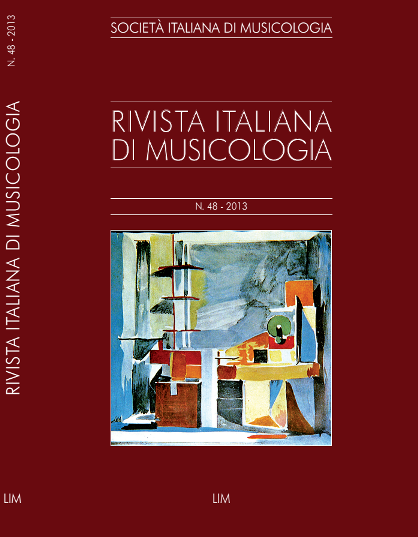Del profondo e di altri oracoli. Profezie e pericoli negli ultimi scritti di Richard Wagner
Abstract
This essay retraces aspects of philosophical, political and aesthetic thought from the last years of Richard Wagner’s life. The main goal is to offer an interpretation of the various facets of the core of his reas-oning: the dialectic between the concepts of ‘depth’ and that of ‘surface’. It is a notion that Wagner first theorized in his Beethoven in 1870, but that accompanies the musician from his youth as his own poetic vision. Thus, although mostly focused on the musician’s latest writings of the musician, this essay frequently draws from Wagner’s earlier works in order to trace the development of this idea. The rationale is centered on the philosophy of Schopenhauer: Wagner identifies the ‘surface’ with the world of Representation and the ‘depth’ with that of the Will. Unlike the philosopher of Gdansk, who views the body as a fragment of the world capable of revealing the Will, Wagner identifies the cry (and, similarly, music) and the blood as the two phenomena which reveal the Depth. From these two phenomena, ever-present in Parsifal, we will focus on the last Wagnerian drama, the bearer of a soteriology that, after an immersion in the depths of the Will of Tristan, seeks to positively reconcile the two dimensions of the ‘depth’ and the ‘surface’.Published
10/24/2013
Issue
Section
Saggi


